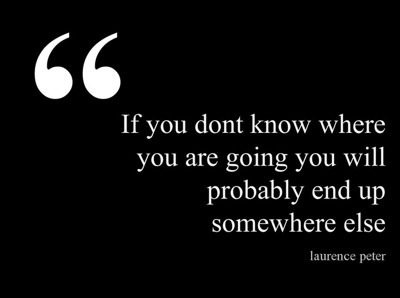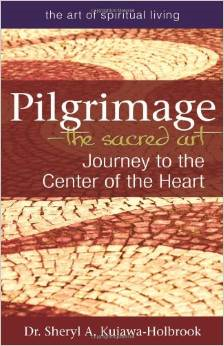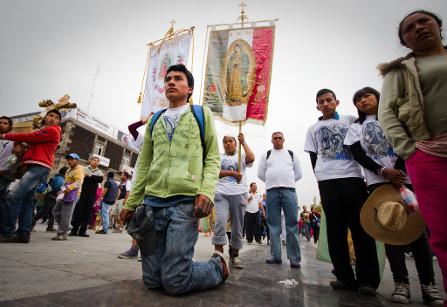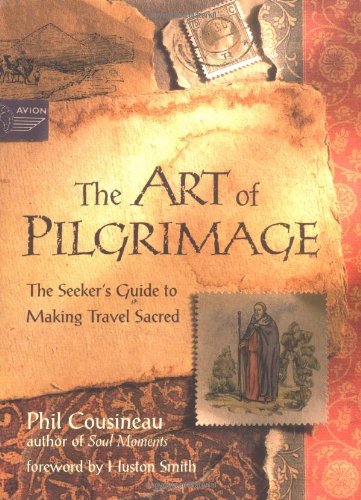Traveling as a Sacred Journey the Wanderlust for God finding a place of connection in sacred places. Journeying as a means of drawing near to God?
Wanderlust: Here are my ramblings ![]()
A yearning for more of the Lord and more of true self, there is a pining for Scotland the land of my birth. I’m presently in America. There is a pining for the past and a pining for the future, creating a wanderlust, thus not able to rest in the present, a lust for the past and the future, thus the focus is not on the past which is past or the future not obtained. This state of yearning for past and future preventing you/me from not actually entering the present place of rest.
Is it a lust that causes the wandering, trying to grasp hold of things that we can’t obtain, and not resting in the knowledge that the Lord knows the way and that is enough. Rebellion enters, we are then not able to yield to what life offers, and rest in the present moment, the now, to be present and content and connected to our being part of human. To be focused and immersed in the present, and not longing for the past or the future but desiring the now, and rest in God’s embrace.
The children of Israel wandered and I don’t know if the grumbling was for the past or lusting for more or better future, but it was not out of a motive of love, but a desire to fulfill the needs of the carnal nature. The circumstances we find ourself in reveal who we are. A book I’m reading at present by Tommy Newberry states this thought well “our circumstances are just a reflection of what is going on inside our secret world of thoughts, emotions, and beliefs.” pg 34. Success is not an accident. Mark Condy
We shall not cease from exploration
And the end of all our exploring
Will be to arrive where we started
And know the place for the first time.
-- T.S. Eliot

Wanderlust Productions
Making God Famous One Film At A Time.
The Sacred aspect of travel
Sacred Journey
A recommendation from above site
Other thoughts of a different perspective
Traveling or Pilgrimage?


By BRUCE FEILER
The New Allure of Sacred Pilgrimages
Pilgrims at the shrine of Our Lady of Guadalupe in Mexico City. Credit Geovien So/Pacific Press/LightRocket, via Getty ImagesLast year, Sergeant Roldan traveled with dozens of other veterans, many in wheelchairs or hospital gurneys, from the Walter Reed Army Medical Center in Washington to the town of Lourdes in southwest France. They were making a pilgrimage to the Catholic shrine to Saint Bernadette, a teenage girl who in 1858 claimed to have had multiple encounters with the Virgin Mary. At the climax of the event, Sergeant Roldan and his fellow pilgrims lined up to bathe in the town’s sacred waters.
These veterans are among the growing number of Americans joining the worldwide boom in spiritual travel. This growth comes at a time when organized religion around the world is feeling threatened. In the United States, surveys from Pew and others show that attendance is down, membership is down, even the number of people willing to define themselves as religious is down. A 2012 Gallup study of 39 countries (from Asia to Africa) found a “notable decline across the globe” in self-described religiosity, down 9 percent in just seven years.
Pilgrimage, meanwhile, is more popular than ever. At the First International Congress on Tourism and Pilgrimages in September, the United Nations released a study finding that of every three tourists worldwide, one is a pilgrim, a total of 330 million people a year. These figures include 30 million to Tirupati in India, 20 million to Our Lady of Guadalupe in Mexico, 15 million to Karbala in Iraq, and four million to Lourdes.
Last year I went on six of these pilgrimages to explore what this new phenomenon says about the future of faith. In addition to the trip to Lourdes, I bathed in the Ganges River along with 100 million people during the 55-day Kumbh Mela, trekked on a 700-mile Buddhist path in Japan, walked in the footsteps of prophets in Saudi Arabia and Jerusalem, and traveled with African-Americans to reclaim their roots in Nigeria. What I found is that pilgrimage is not merely ancillary to the modern spiritual existence. In an age of doubt and shifting beliefs, people are no longer willing to blindly accept the beliefs of their ancestors. They are insisting instead on choosing their own beliefs. A pilgrimage can be a central part of this effort.
For as long as humans have walked, they have walked to get closer to their gods. The Babylonians made pilgrimages, as did the Greeks, Israelites, Chinese and Mayans. The Arabic word for pilgrimage, hajj, comes from the Hebrew word for celebration, hag. In Tibetan, the word for human being means “goer.”
But pilgrimage has exploded recently for a variety of reasons, including the ease of international travel. Though all Muslims are called to make the hajj at least once, in 1920 only 50,000 people did. Last year it was more than two million.
Even people who are deeply religious go through periods of questioning. Brian Kwan, a young photographer in Colorado Springs, was born to Buddhist parents but converted to Christianity at 16. When his father died suddenly, he began to question his faith. He decided to hike the Jesus Trail, a four-day, 40-mile journey from Nazareth to the Sea of Galilee. He carried no luggage.
At one point Mr. Kwan ran out of food and water and became disoriented. He wandered in the heat for 10 hours. “That was the scariest part,” he said, “but I knew that God was with me, and that my dad was with me, too.” His experience proved pivotal, and when he reached the Jordan River, he chose to become baptized.
“The moment that you stop questioning,” he said, “is the moment you stop growing. You’re either walking in the direction of God or you’re walking away.”
Not all pilgrims are religious. On Shikoku Island in Japan, I met Alexander Fu and Jennifer Tsai, two Americans who had recently graduated from medical school. They were embarking on an 88-temple trek in honor of the revered Buddhist monk Kobo Daishi.
Mr. Fu told me he was a man of science, not religion. “But now we’re at a turning point in our lives, when we’re about to have responsibilities to actually take care of people,” he said. “It’s a good time to reflect on how we want to conduct ourselves.”
Others go on sacred journeys to deepen their identity. Alafia Stewart, a recent college graduate from New York, attended the annual festival in Osogbo, Nigeria, in honor of the river goddess Osun. Her goal was to get in touch with her Yoruban ancestors, who were wrenched from that area and sold into slavery. “So much of our religious faith was taken away, our names were taken away,” she said. “There is no power in not knowing who you are. This journey, coming back here, means that I’m taking back that power.”
To go on a pilgrimage is to enter a heightened place where emotions soar, but sometimes dip.
When Sergeant Roldan entered the baths at Lourdes, he was apprehensive. “I felt awkward, but I kind of went with it,” he told me. “As soon as they placed the water over my head, I felt a sense of relief. The following day I felt a change within me. I wasn’t having as much pain. For some reason, my face felt lighter.” Even more than physical change, he felt healed enough to embrace becoming an active father to his daughter.
It’s that feeling of taking control over one’s life that most affected the pilgrims I met. So much of religion as it’s been practiced for centuries has been largely passive. People receive a faith from their parents; they are herded into institutions they have no role in choosing; they spend much of their spiritual lives sitting inactively in buildings being lectured at from on high.
A pilgrimage reverses all of that. At its core, it’s a gesture of action. In a world in which more and more things are artificial and ephemeral, a sacred journey gives the pilgrim the chance to experience something both physical and real. And it provides seekers with an opportunity they may never have had: to confront their doubts and decide for themselves what they really believe.
As appealing as that destination may be, there’s only one way to achieve it. Get up off your sofa and go.

Other Labyrinth sites
Labyrinth as a pilgrimage
From above website:
The Labyrinth of Chartres Cathedral
Around 1230, as the Cathedral of Chartres was being built, a large labyrinth forty feet across was set with blue and white stones into the floor of the nave of the church. Similar labyrinths were placed in other French Gothic cathedrals, such as Amiens, Rheims, Sens, Arras and Auxerre. Around the eighteenth century, all of these labyrinths, except the one at Chartres, were suppressed. [The labyrinth at Amiens was later restored in 1894.]
These labyrinths were all laid out according to the same basi c pattern: twelve rings that enclose a single path meandering path which slowly leads one to the center rosette. The path makes 28 loops, seven on left side toward the center, then seven on the right side toward the center, followed by seven on the left side toward the outside, and finally seven on the right side toward the outside terminating in a short strait path to the rosette.
c pattern: twelve rings that enclose a single path meandering path which slowly leads one to the center rosette. The path makes 28 loops, seven on left side toward the center, then seven on the right side toward the center, followed by seven on the left side toward the outside, and finally seven on the right side toward the outside terminating in a short strait path to the rosette.
The Middle Ages was a time of pilgrimages. Since most people could not make the grand pilgrimage to Jerusalem, considered by Christians to be the center of the world, and symbolizing the Kingdom of Heaven, they would make pilgrimages to important cathedrals such as Canterbury, Santiago de Compostella and, of course, Chartres. Once at Chartres, they would end their pilgrimage by walking the labyrinth to the center, and then slowly retracing their steps to regain the "outside world" and return to their homes.
The labyrinth of Chartres has been referred to by four different names:
le d�dale (or Daedalus, the legendary architect who built a labyrinth for King Minos of Crete) Just as Theseus struggled against the Minotaur, so man struggles against evil, and is guided back out through the maze by Ariadne or divine grace. The labyrinth of Chartres, however, is not a complex maze but a single path with no hidden corners or dead-ends.
la lieue (or league: which is a distance of about three miles) Although the length of the path is only 260 meters, in the Middle Ages some pilgrims would walk the labyrinth on their knees. This exercise would take about an hour, or the time needed to walk three miles.
le chemin de J�rusalem (or road to Jerusalem) By walking the labyrinth, the faithful could make a substitute pilgrimage to the Holy Land, and be united in spirit with the Crusaders.
le chemin du paradis (or road to paradise, the heavenly Jerusalem) By walking the labyrinth, the faithful trace the path of our long and laborious life on earth, beginning with birth, at the entrance, and ending with death, at the center. The way out symbolizes purgatory and resurrection.
Across these interpretations of the labyrinth of Chartres, we see how medieval theologians and artisans adopted pagan myths and symbols to express Christian concepts.
pilgrimage to Taize in France?
Journaling
Journaling helps us pay attention to God. It is a way to hear and respond to God - to develop a living relationship with God. To come to that place of discipline that will enrich your own spiritual pilgrimage through this writing art.
All part of the inner journey.
Another form of pilgrimage a Hobo
Resilience
re·sil·ience
rəˈzilyəns/
- 1.the ability of a substance or object to spring back into shape; elasticity."nylon is excellent in wearability and resilience"
- 2.the capacity to recover quickly from difficulties; toughness."the often remarkable resilience of so many British institutions"